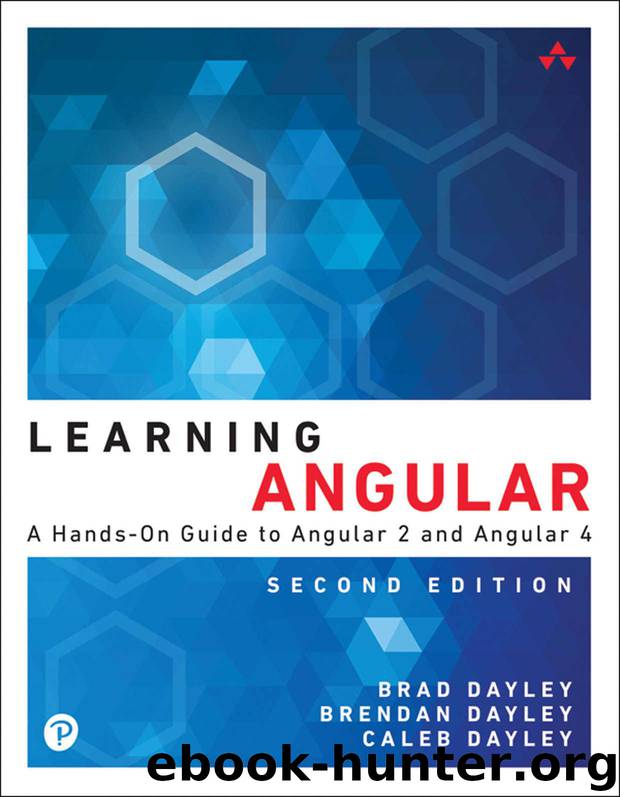Learning Angular: A Hands-On Guide to Angular 2 and Angular 4 by Dayley Brad & Dayley Brendan & Dayley Caleb

Author:Dayley, Brad & Dayley, Brendan & Dayley, Caleb [Dayley, Brad]
Language: eng
Format: azw3
Publisher: Pearson Education
Published: 2017-09-19T04:00:00+00:00
The web page that results from Listings 8.5 through 8.10 is shown in Figure 8.2.
Figure 8.2 Custom component directive
Summary
Angular directives extend the behavior of HTML. Directives can be applied to Angular templates as HTML elements, attributes, and classes. The functionality of directives is defined in the @directive class. Angular provides several built-in directives that interact with form elements, bind data, and interact with browser events. For example ngModel binds the value of a form element directly to the component. When the component value changes, so does the value displayed by the element and vice versa.
One of the most powerful features of Angular is the ability to create your own custom directives. Implementing a custom directive in code is simple, using the @directive class. However, directives can also be very complex because of the myriad ways they can be implemented.
Download
This site does not store any files on its server. We only index and link to content provided by other sites. Please contact the content providers to delete copyright contents if any and email us, we'll remove relevant links or contents immediately.
Hello! Python by Anthony Briggs(10121)
The Mikado Method by Ola Ellnestam Daniel Brolund(10011)
Dependency Injection in .NET by Mark Seemann(9517)
Sass and Compass in Action by Wynn Netherland Nathan Weizenbaum Chris Eppstein Brandon Mathis(7915)
Svelte with Test-Driven Development by Daniel Irvine(7812)
The Well-Grounded Java Developer by Benjamin J. Evans Martijn Verburg(7770)
Test-Driven Development with PHP 8 by Rainier Sarabia(7550)
Layered Design for Ruby on Rails Applications by Dementyev Vladimir;(7382)
Web Development with Django by Ben Shaw Saurabh Badhwar(6884)
Secrets of the JavaScript Ninja by John Resig Bear Bibeault(6635)
Secrets of the JavaScript Ninja by John Resig & Bear Bibeault(6633)
React Application Architecture for Production by Alan Alickovic(6568)
Jquery UI in Action : Master the concepts Of Jquery UI: A Step By Step Approach by ANMOL GOYAL(5872)
Kotlin in Action by Dmitry Jemerov(5298)
Software Architecture for Web Developers by Mihaela Roxana Ghidersa(4803)
Audition by Ryu Murakami(4766)
Accelerating Server-Side Development with Fastify by Manuel Spigolon Maksim Sinik & Matteo Collina(4644)
Hands-On Full-Stack Web Development with GraphQL and React by Sebastian Grebe(4383)
Solidity Programming Essentials by Ritesh Modi(4372)
